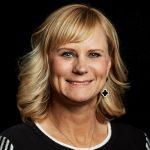
NEW YORK—The opportunity to provide integrated solutions to policyholders and enhance communication are key reasons for breaking down silos – something insurance providers have grappled with for years.
"It's commonly accepted in the insurance industry that the more lines of insurance a client purchases from a single carrier, the more satisfied they tend to be, as evidenced by greater loyalty to the carrier and broker," said Mark Cantin, president, Field Operations at QBE North America.
 Mark Cantin, President, Field Operations at QBE North America.
Mark Cantin, President, Field Operations at QBE North America."Furthermore, that loyalty translates to better profitability, which means more market stability and consistency from the client's perspective. It's a virtuous cycle that many aspire to achieve, but it has been very difficult to accomplish, especially across commercial property and casualty and specialty lines of business."
Why the difficulty? Silos.
Traditional silos on both the carrier and broker sides of the business have proven very difficult to break down.
"Various departments within an organization operating nearly independently is nothing new," says Kristy Kendle, regional executive for QBE North America's Western Region.
 Kristy Kendle, Regional Executive, QBE North America's Western Region.
Kristy Kendle, Regional Executive, QBE North America's Western Region."On the carrier side, P&Ls are typically established by line of business. And while top management may encourage teamwork across businesses, the measurability of the P&L makes it hard for individual business leaders to sacrifice a little control over distribution or account underwriting decisions for the greater good."
An understandable reason for these silos is the need for specialization. Each line of business has its nuances, and being both competitive and profitable requires deep expertise.
"That specialization," said Cantin, "can carry over to the broker side, where you have a dedicated team of placement officers for commercial property and casualty and other teams dedicated to specialty lines. They often run into the same silo issues that carriers do."
Antiquated systems where customer information isn't easily shared among departments can also contribute to silos. Often, multiple product options must be handled manually, a labor-intensive process at best.
Geography also contributes to silos. Teams dedicated to different lines of business may be located in different areas of the country, adding to the challenges of coordinating multiline solutions for a single client.
"You have a lot of different moving components that play into why silos exist in the first place, on the carrier side as well as our broker/agent partners on the distribution side," says Kendle.
One strategy to reduce silos is to have C-suite executives, from both the distribution and carrier side, stress the importance of coordinating across product lines and then hold staff accountable. A robust field organization that ties the line of business units together is key.
"The C-Suite executives can talk about teamwork to deliver multiline solutions," says Cantin, "but it will do little good unless the guidance translates to action at the desk level where business is written day to day. That's the hard part."
"At QBE, we have what we call our field operations team and we have business development leaders," says Kendle. "Day in and day out, their job is to do this, and it's to coordinate across all business units, making sure we have the right information."
Another key to cross-business teamwork at the desk level is to bring the different underwriting teams together on a local basis by overlaying the national business unit structure with a regional field structure that includes defined operating routines for reinforcing underwriting relationships at the carrier and distribution levels.
"The regional structure fosters a culture that is more oriented to looking at a client's needs holistically," said Cantin. "You can look at results across all businesses and track how well you are delivering multiline solutions at the local level, where people feel a greater sense of accountability."
Limiting the number of trading partners for distribution – QBE has between 1,100 and 1,200 across North America – is another factor, says Kendle.
"The brokers and the underwriters have more time to put forth strategy around cross-sell efforts," says Kendle, adding how this allows them to better understand clients' needs at a more granular level.
Investment in technology infrastructure is another key to improve teamwork across departments at both the carrier and distributor end. Several years ago, QBE undertook a major effort to put much of its client and trading partner information on a single, global customer relationship management platform.
"It has been an intensive effort," says Cantin. "Simple things like making sure everyone uses the same name for a client across all countries and businesses is harder than you would think. But it's proven worthwhile. We now have a much clearer picture of our total relationship with clients, and that's allowing us to work with brokers and manage our pipeline to better deliver integrated multiline solutions to clients. We're making the same investments on the underwriting and policy administration side, too."
Having unified, streamlined operations at QBE equates to nimble decision-making. In addition, thinking outside the box offers more opportunities to cross sell. The key, Kendle says, is to empower employees within the organization.
"We have to provide everyone in our ecosystem with clear direction and strategy, support them, and give them modern-day tools to help break down entrenched silos," says Kendle.
"Larger organizations tend to operate in silos because they're so big their systems become unwieldly; it's hard to bring all relationships together. Being more agile, it's allowed us a major point of competitiveness and differentiation. In all aspects of life, communication facilitates collaboration, whether it's business or personal; that's our focus day in and day out."
© 2025 ALM Global, LLC, All Rights Reserved. Request academic re-use from www.copyright.com. All other uses, submit a request to [email protected]. For more information visit Asset & Logo Licensing.








